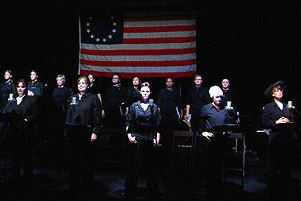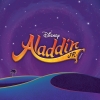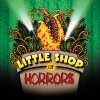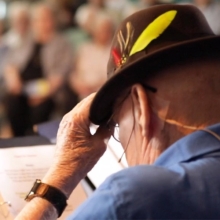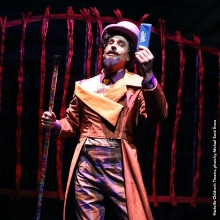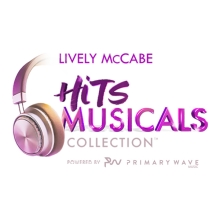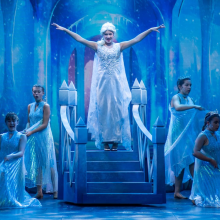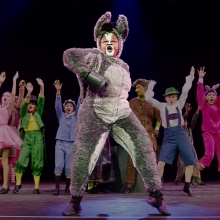1776 Revolutionized: A New Take on a 235-Year Old Story by Peter Filichia
1776 Revolutionized: A New Take on a 235-Year Old Story by Peter Filichia
By Jason Cocovinis on March 2, 2011
in
Show/Author Spotlight, Announcements
| Tags:
In the News, Show Spotlight
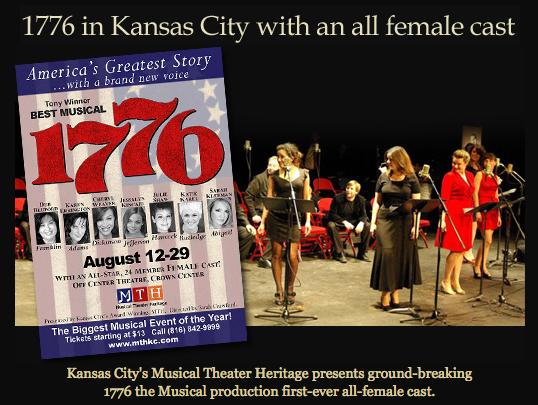 The following feature about a new approach to staging 1776 was written specifically for the MTI Marquee by the renowned theatre critic, Peter Filichia. Last summer, Peter saw an inspiring ALL-FEMALE, concert-version of the show performed by Kansas City's Musical Theater Heritage. Since not every organization has the resources (24 male actors!), nor the budget for sets and costumes, MTH's revolutionary casting choices and their paired-down production is a good example for other groups looking for a new take on America's 235-year old story.
The following feature about a new approach to staging 1776 was written specifically for the MTI Marquee by the renowned theatre critic, Peter Filichia. Last summer, Peter saw an inspiring ALL-FEMALE, concert-version of the show performed by Kansas City's Musical Theater Heritage. Since not every organization has the resources (24 male actors!), nor the budget for sets and costumes, MTH's revolutionary casting choices and their paired-down production is a good example for other groups looking for a new take on America's 235-year old story.Peter Filichia on the All-Female, Concert Version of 1776
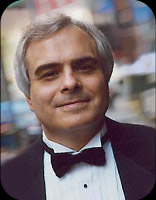 As it turns out, a theater company doesn’t need 24 white men and two white women to perform 1776.
As it turns out, a theater company doesn’t need 24 white men and two white women to perform 1776.All these years, we thought such a cast was a necessity. Peter Stone’s book and Sherman Edwards’ score for the Tony-winning classic seem to demand that 20 congressional delegates be on stage. At least that many are needed as representatives of the 13 colonies, the men who debate whether or not they should break from England and form a new country. Also on the scene are four other men and two women who aren’t members of Congress but who nevertheless have their own opinions on independence.
With such a large cast, many theater companies automatically dismiss the thought of producing 1776. Some professional theaters say they can’t afford that many salaries. Meanwhile, community theaters face a different obstacle: 24 men rarely even turn out for auditions.
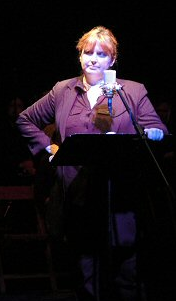 There’s one challenge that both kinds of theaters face: costuming all these characters runs into money. From the white wigs on their heads to the buckled shoes on their feet – and the fancy brocade costumes in between – such costumes make 1776 an obviously expensive show.
There’s one challenge that both kinds of theaters face: costuming all these characters runs into money. From the white wigs on their heads to the buckled shoes on their feet – and the fancy brocade costumes in between – such costumes make 1776 an obviously expensive show.As a result, many Americans who would be thrilled by 1776 now only see it if they happen to turn on their TVs at the precisely right time on the Fourth of July when the 1972 film version is inevitably shown. What a shame, for this astonishing musical is one that every American should witness. We need to learn what our Founding Fathers endured to give us the freedom that so many of us now take for granted. But how many can when stage productions aren’t as plentiful as they should be?
In the summer of 2010, however, the resourceful George Harter and Sarah Crawford – he’s the executive director of Musical Theater Heritage in Kansas City where she stages musicals -- found a way to circumvent the obstacles. They put different ingredients into their melting pot -- and came up with something equally delicious.
Granted, their concept for this musical about radicals at first seemed equally radical: They had women not only to play Martha Jefferson and Abigail Adams, but also John Adams, Thomas Jefferson, Benjamin Franklin and all the rest.
And yet, it worked splendidly – partly because Harter and Crawford decided to stage the show as a concert presentation and not as a full production. True, men’s clothes in the 18th century were effeminate by today’s standards, especially with those below-the-knee stockinged legs. But if genuine costumes had been used, the actresses might have come across looking like – well, actresses, and not our Founding Fathers. Crawford and Harter wisely had every woman wear a black jacket, shirt and pants. Those delegates who were pro-independence wore white ascots while loyalists wore red ones.
The concert setting helped the atypical casting. On a realistic set, the women might have looked foolish; in front of music stands, they didn’t seem out-of-place at all. And because all the women were comfortable in their roles, they made the audience comfortable, too.
For some time, we’ve been an era where (thankfully!) a person’s race or color isn’t an obstacle to his or her being cast. So why not take non-traditional casting to the next step by ignoring gender? The ace trump in this “color-blind casting” was Chioma Anyanwu’s Samuel Chase. Anyanwu is female, black and thin, unlike Chase, who was the most overweight man in Congress. The Kansas City audience members didn’t seem to care, any more than they did that Jessalyn Kincaid was nearly a couple of feet shorter than the 6-foot-two Thomas Jefferson.
Now that Musical Theater Heritage has opened the door for a gender-bending production, why should 1776 stop there? Your concert version could have black, white, Latino, boys, girls, men and women, young and old. Do it, and chances are that by the time your female Benjamin Franklin says, “We’re men -- no more, no less,” no audience member will snicker at the inadvertent irony. As they did in Kansas City, they’ll come to accept each character as Stone and Edwards wrote him.
To be sure, the concert form helps the bottom line in these economically shaky times. As for props, all that’s really needed is a nice long quill pen. It’s an integral component in one song, but it turns out to be even more important at the end of the show, when it’s passed from one delegate to another.
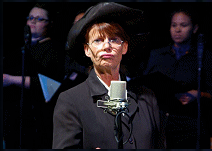 This non-traditional concert of 1776 put the emphasis on the work itself. As Otis Guernsey so wisely said when he included 1776 as one of the 10 Best Plays of the 1968-69 season, “When you entered the theater, you knew how it was going to turn out. After a half-hour, however, you weren’t so sure.” Indeed, by the 90-minute mark, when only six colonies out of the necessary 13 are voting for independence -- and only six days remain until July 4 – an audience may well begin to think, “It didn’t happen! There IS no United States of America! They’re breaking the news to us as gently as they can -- by telling us through a marvelous musical!”
This non-traditional concert of 1776 put the emphasis on the work itself. As Otis Guernsey so wisely said when he included 1776 as one of the 10 Best Plays of the 1968-69 season, “When you entered the theater, you knew how it was going to turn out. After a half-hour, however, you weren’t so sure.” Indeed, by the 90-minute mark, when only six colonies out of the necessary 13 are voting for independence -- and only six days remain until July 4 – an audience may well begin to think, “It didn’t happen! There IS no United States of America! They’re breaking the news to us as gently as they can -- by telling us through a marvelous musical!”And while we’re discussing a patriotic musical: the motto on the Great Seal of the United States – E pluribus unum: Out of many, one -- could also serve as the motto for America’s greatest art form. For just as this country has benefited from members of all races and creeds working together, a piece of musical theater similarly succeeds: out of many collaborating comes one great show. That show can be 1776, no matter who auditions for your next production and how small your budget is. In consideration of the latter point, Music Theatre International is now offering a discount on any concert presentation.
So the time is right for audiences to feel about 1776 what John Adams in the show declares about the Declaration of Independence: “It’s a masterpiece, I say! They will cheer every word, every letter.” If you have sheer talent on stage, your audience will, too.
More from Peter Filichia
Click here to read Peter Filichia's original review of Kansas City Music Theater's Stage Concert of 1776.
Peter Filichia is the theater critic for the Star-Ledger and News 12 New Jersey. He writes a column each Monday, Wednesday and Friday at www.theatermania.com, and one each Tuesday for www.masterworksbroadway.com.
His new book Broadway Musicals: The Biggest Hit &the Biggest Flop of the Season, 1959-2009 is available through Applause Books and at www.amazon.com.
License 1776
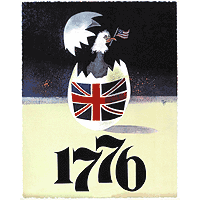 Click here for licensing and additional information.
Click here for licensing and additional information. zp8497586rq
jfdghjhthit45
